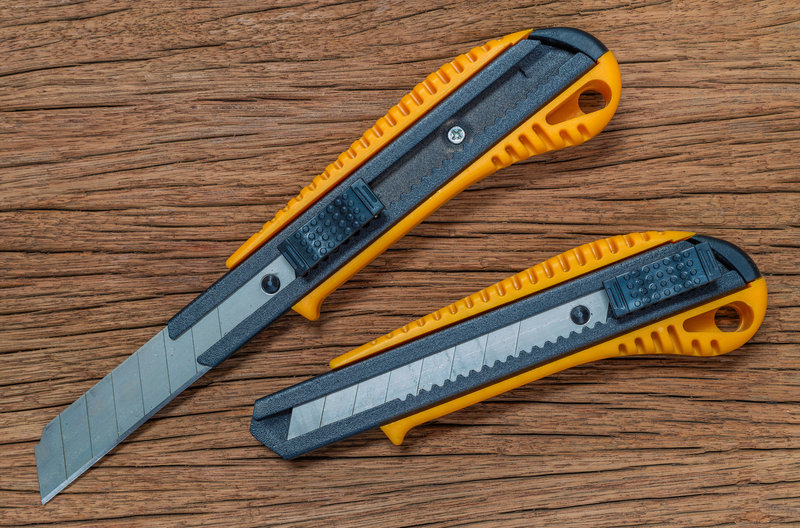How to Store Your Sofa Like a Pro and Protect Its Value
Storing your sofa correctly is more than just finding a safe spot and leaving it there. Whether you're moving, remodeling, or simply need to make space, knowing how to store your sofa like a pro and protect its value can save you from headaches, costly damage, and even allow you to maximize its resale price later. In this comprehensive guide, we'll walk you through everything you need to know to safeguard your couch's shape, upholstery, and structure with expert storage tips and tricks.
Why Proper Sofa Storage Matters
Your sofa is an investment. It's not just another piece of furniture; it's a centerpiece of your living room, a place of relaxation, and sometimes the priciest item in the house. Improper storage can result in:
- Mold, mildew, and unpleasant odors from moisture
- Structural damage due to weight or improper positioning
- Fabric fading, staining, or tearing from exposure to light and dust
- Infestations from pests if left unprotected
- Loss of value if you decide to sell it later
By understanding the correct way to store your sofa, you prolong its lifespan and maintain its resale appeal.

Prepping Your Sofa for Storage
1. Clean Your Sofa Thoroughly
Storing a dirty sofa sets the stage for problems like lingering smells and stains that harden over time. Here are some key cleaning tips:
- Fabric Sofas: Vacuum all surfaces, including crevices under cushions. Use an upholstery cleaner suited for your fabric type. Spot-treat any stains and let the sofa dry completely.
- Leather Sofas: Wipe with a soft, slightly damp cloth. Apply a leather conditioner to prevent cracking during long-term storage.
Tip: Let your sofa air out and dry fully before storage. Any moisture can cause mold growth within days.
2. Disassemble If Possible
Taking apart your sofa not only helps with moving and maximizing storage space but also reduces stress on vulnerable joints. If your couch allows:
- Remove legs, cushions, and any detachable parts
- Place screws and smaller items in labeled bags for easy reassembly
- Wrap cushions separately to prevent compression
3. Protect Each Sofa Part
Protecting your sofa is critical to prevent dust, scratches, and fading. Professional storage techniques include:
- Wrapping separate pieces in furniture blankets or bubble wrap
- Covering the sofa loosely with breathable cotton sheets (avoid plastic directly on upholstery as it can trap moisture!)
- Using specialty furniture covers designed for storage, which protect against dust and allow for airflow
Pro Tip: Never wrap your couch in plastic for long-term storage. Condensation can build up inside, encouraging mold and mildew.
Choosing the Right Storage Environment
1. Opt for Climate-Controlled Storage Units
Not all storage spaces are created equal! Climate-controlled storage units maintain a stable temperature and humidity. This is essential for:
- Preventing wood warping and veneer separation
- Reducing risk of mold on fabric or leather
- Keeping pests away
If you plan for long-term sofa storage, especially in extreme weather regions, climate control is worth the extra expense.
2. Keep It Off the Ground
Placing your couch or couch pieces directly on a storage unit's floor exposes them to dust, spills, and cold. Instead:
- Use wooden pallets, moving blankets, or even cardboard sheets to elevate your sofa
- Allow air to circulate under and around the couch
- Further reduce risk of pests or moisture wicking up from the ground
This simple step can make all the difference in long-term sofa preservation.
3. Choose a Clean, Secure Location
Whether at home or in a storage facility, always inspect the space for leaks, pests, and dirt. Opt for storage units with good onsite security to protect your valuable furniture from theft or accidental damage.
Properly Positioning Your Sofa in Storage
1. Store Upright and Balanced
Avoid storing your sofa on its side or stack heavy objects on it. This can permanently warp frames and misshape cushions. Instead:
- Place your sofa in its normal resting position (legs down, seat facing up)
- Distribute weight evenly
- Leave at least 2-3 inches of space all around for airflow
Never pile boxes or other furniture on your stored couch!
2. Allow for Air Circulation
Stuffiness is the enemy of stored furniture. Arrange pieces with space between them and away from walls so that air can move freely. This helps keep mold and odors at bay.
3. Do Not Store Near Heat Sources
Strong heat from radiators, water heaters, or direct sunlight (through storage unit windows) can dry out leather, fade fabrics, and damage glue joints. Store your couch in a cool, dry, shaded location.
Additional Pro Tips for Preserving Sofa Value
1. Use Desiccant Packs or Moisture Absorbers
Add silica gel packs or moisture absorbers in the sofa's storage area to minimize humidity. This protects both the frame and upholstery from moisture damage and smells.
2. Treat For Pests Before Storage
Vacuum all crevices and spray with a fabric-safe pest deterrent (like lavender or cedar spray) to keep insects and rodents away during storage.
3. Regularly Check On Your Sofa
Make periodic visits to your storage unit if possible. Inspect your sofa for:
- Mold or mildew growth
- Pest activity
- Shifting or sagging cushions
- Loose wrappings or covers
Early problem detection allows for quick action, minimizing the risk of permanent damage.
When and How to Unpack Your Stored Sofa
1. Remove Covers Carefully
When it's time to retrieve your sofa, peel off dust covers gently. Avoid using sharp tools that might snag fabric or scratch leather/wood.
2. Allow the Sofa to Breathe
Let your sofa sit in open air for several hours before use. This dissipates any storage odors and lets materials revert to their normal shape.
3. Spot Clean Before Moving Back In
Even if your sofa was perfectly clean before storage, give it a quick wipe-down or vacuum to remove residual dust.
4. Check and Tighten Any Loose Screws
Reassemble carefully. Make sure all legs and attachments are secure before moving your sofa into position.
Common Sofa Storage Mistakes to Avoid
- Skipping the cleaning step - leading to permanent staining or bad smells
- Wrapping in plastic sheeting - traps moisture and causes mold
- Storing on its end or stacking other items on your sofa - causes warping and dents
- Forgetting moisture absorbers in humid climates
- Selecting non-climate-controlled storage for leather or fine fabric couches
- Ignoring regular check-ups for long-term storage
Avoiding these mistakes will ensure you store your couch like a professional and maintain the sofa's value for years to come.
Frequently Asked Questions (FAQ) About Sofa Storage
Can I Leave My Sofa In My Garage or Shed?
Generally, this is not recommended, unless the garage is insulated and climate-controlled. Extreme temperature swings, humidity, and pests make garages and sheds risky for valuable sofas.
How Long Can I Store a Couch Without Damage?
If you follow all professional sofa storage steps, your couch can stay in storage for months or even years without problems. However, the key to longevity is climate control and regular inspection.
Is It Worth Paying for Professional Storage Services?
If your sofa is high-value or has sentimental worth, consider professional moving and storage services. These services offer expert packing, climate control, and added insurance to guarantee the best results.

Quick Sofa Storage Checklist
- Clean all surfaces and allow to dry completely
- Disassemble removable parts
- Protect with breathable wraps or covers
- Store upright and on a raised surface
- Use moisture absorbers and check climate controls
- Allow air circulation and avoid stacking weight
- Inspect periodically for best results
Conclusion: Store Your Couch Like a Pro and Maintain Its Value
Learning how to store your sofa like a pro and protect its value is essential for anyone who wants their couch to look and feel like new when it's finally put back into use. From furniture cleaning and prepping, to smart storage techniques, climate controls, and careful handling, each step ensures your investment is safeguarded.
Remember: a little effort before storage pays off for years in comfort, style, and value at resale. By following these professional sofa storage tips, you'll enjoy peace of mind and a couch that's always ready for life's next chapter.
Ready to store your sofa the right way? Print this guide and keep it handy for your next move or renovation, and thrive knowing your valuable couch is well-protected!



